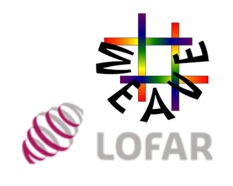WEAVE-LOFAR:
Science team meeting

WEAVE-LOFAR:
Science team meeting

Motivation:
The WEAVE-LOFAR Survey will be a tiered survey of low-frequency radio selected sources, conducted using the new WEAVE multi-object spectrograph on the William Herschel Telescope. Currently scheduled to begin in 2018, WEAVE-LOFAR will produce more than 106 spectra of radio sources, and has a wide range of science goals, ranging from studying the interplay between star formation and accretion in galaxies, to searching for radio galaxies within the epoch of reionisation. Following a very positive external review of the project in October 2015, the time is right to bring together the science team, and interested scientists from member countries and institutes, to discuss the plans for the survey and its scientific exploitation.
The meeting will consist of a broad, whistle-stop tour of the WEAVE-LOFAR survey, ending with plenty of time for discussion, which will be continued on 17th March with the technical survey meeting. Email daniel.j.b.smith [at] gmail.com if you’d like to also attend on the second day and contribute to the technical discussion of the survey.
Space is limited, so registration is essential.
Registration is now closed
Final Programme (including links to PDFs of the presentations):
16th March 2016 - The WEAVE LOFAR Survey
10.30: Coffee
10.45: Matt Jarvis & Dan Smith - Welcome & Intro
11.00: Scott Trager - WEAVE Instrument Overview, Status & Timetable
11.30: Huub Rottgering - LOFAR data Overview & Status
12.00: Dan Smith - WEAVE-LOFAR survey overview
12.30-1.30: Lunch & Discussion
1.30: Individual Science Cases
Philip Best: Accretion & AGN-driven Feedback
Dan Smith: The star formation history of the Universe
Matt Jarvis: Spatially resolved spectroscopy of LOFAR targets & Cosmology
Huub Rottgering: Radio galaxies in the EoR
2.30: Discussion: Survey planning (timeline, fibre requirements), science case
opportunities, fallout from the Paris survey science review etc.
17th March 2016 - Technical survey team meeting
10.30: Dan Smith: Intro
10.35: Technical aspects of the survey
i) Philip Best: Overview
ii) Tim Shimwell: Optimizing catalogue production
iii) Wendy Williams: Source classification & required ID method
iv) Cyril Tasse: Improved map making
v) David Nisbet: automated cross-ID with multi-band likelihoods
vi) Martin Hardcastle: visual approaches
vii) Ken Duncan: photometric redshifts for WEAVE LOFAR
12.30: Lunch & Discussion
1.30: Seb Oliver & Peter Hurley: multi-wavelength insight from HELP
2.00: Michael Tarr: BOSS observations of LOFAR targets
2.30: Discussion: Defining the critical path to survey readiness.
4.30(ish): Close
Please note: the schedule is subject to change
Confirmed Attendees:
David Alonso (Oxford)
David Bacon (Portsmouth)
Philip Best (Edinburgh)
Gianluca Castignani (Cote d’Azur)
Rachel Cochrane (Edinburgh)
Gavin Dalton (Oxford)
Steven Duivenvoorden (Sussex)
Ken Duncan (Leiden)
Gulay Gurkan (Herts)
Catherine Hale (Oxford)
Martin Hardcastle (Herts)
Peter Hatfield (Oxford)
Nancy Hine (Herts)
Ryan Houghton (Oxford)
Peter Hurley (Sussex)
Matt Jarvis (Oxford)
Eleni Kalfountzou (ESAC)
Ian Lewis (Oxford)
Natasha Maddox (Astron)
Lucia Marchetti (OU)
Sean McGee (Birmingham)
Leah Morabito (Leiden)
David Nisbet (Edinburgh)
Seb Oliver (Sussex)
Matt Prescott (UWC)
Shaun Read (Herts)
Gabriela Calistro Rivera (Leiden)
Huub Rottgering (Leiden)
Tim Shimwell (Leiden)
Dan Smith (Herts)
John Stott (Oxford)
Michael Tarr (Portsmouth)
Cyril Tasse (Paris)
Scott Trager (Groningen)
Mattia Vaccari (UWC)
Aprajita Verma (Oxford)
Glenn White (OU)
Wendy Williams (Herts)
Last updated 2016/03/14
Organisers:
Dan Smith (University of Hertfordshire)
Philip Best (Edinburgh)
Matt Jarvis (Oxford)
Huub Rottgering (Leiden)

The First WEAVE-LOFAR Science Team Meeting
The Fisher Room,
Oxford Astrophysics,
Wednesday March 16-17, 2016